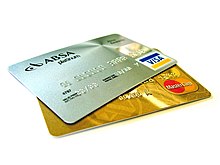


Plastic cards usually serve as identity documents, thus providing authentication. In combination with other assets that complement the data stored on the card, like PIN numbers, they also serve authorization purposes, most often as bank cards for allowing their holders to do financial transactions. Early and simpler cards feature only hard-to-imitate integrated photographs, security holograms, guillochés, or a magnetic strip on which few bytes of personal data could be stored. Today, smart cards, i.e. those equipped with an electronic chip (storage, or RFID), serve as high-security active electronic documents that allow their holder to qualify for driving cars (drivers license card), receive medical treatment (health insurance cards), do banking and more.
In their January 2020 report, the International Card Manufacturers Association's (ICMA) indicates a production increase to a record-high of 37.1 billion cards and $27 billion revenue in 2019.[1] Forecasts predicted market growth at a rate of 8.2% from 2021 to 2028, which was counteracted by losses through the Covid pandemic.[2]
Plastic cards (standard size ID-1) come in various colors and finishings.[3] The laminated mixture of various dyes, paper and plastics (so far mainly PVC and PVCA) and the integration with electronics makes them hard to recycle.[4][5]
Apart from "regular", i.e. non-electronic cards, there is considerable overlap between "chip-enabled", "digital" and "smart" cards, mostly for historical reasons in the development of the current fully equipped smart cards.[7][8]
Plastic cards may be printed with the following security-relevant features, some of them also containing personal information, others only serving as anti-forgery devices:[9][10]